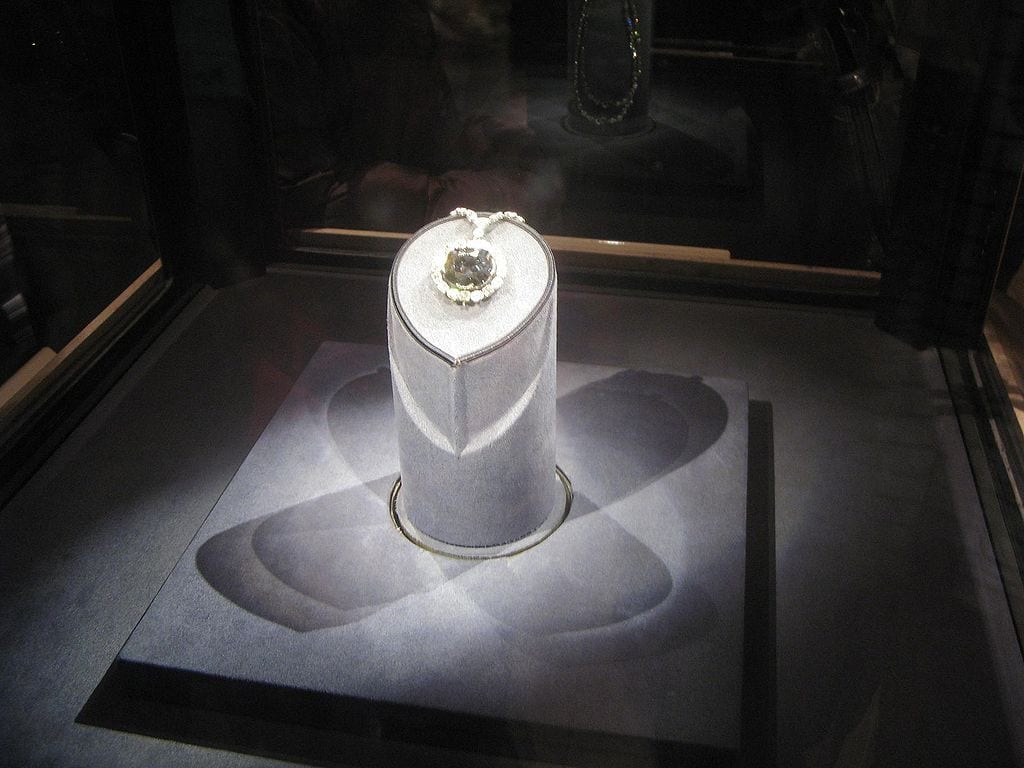Trending Now
The Hope Diamond has a rich and bizarre history. Today, the deep-blue diamond is housed at the Smithsonian Institution’s Museum of Natural History. It made its way to the Smithsonian in 1958, but where was it before that? And where was it discovered? Is it really cursed? Read on to find out more about this impressive gem.
How It All Began
The diamond is believed to have been mined in the Kollur mine in India. Soon after, it was purchased by French merchant Jean Baptiste Tavernier. At the time, it was over 100 carats, which is more than twice as large as its present size of 42.52 carats.

Photo Credit: Wikimedia Commons
Next Stop: Royalty
King Louis XIV of France purchased the diamond, along with other diamonds and jewels, from Tavernier in 1668. He had the stone recut down to 67 1/8 carats and set on a cravat pin. At the time, the diamond became known as “The French Blue.” It was reset by King Louis XV (King Louis the XIV’s great-grandson) in 1749 and was turned over to the French government in 1791 by Louis XVI and Marie Antoinette. Some say Louis XVI and Marie Antoinette were victims of the Hope Diamond curse (although it is unclear if Marie Antoinette ever actually wore the gem (the curse supposedly afflicts either those who own it or those who wear it)). The diamond was stolen the following year during the looting of the Royal Storehouse and didn’t re-emerge for two decades.
Rediscovery
The French Blue, recut in the intercession into the Hope Diamond (from 67 1/8 carats into 45.54 carats), was found in the possession of a London diamond merchant, Daniel Eliason, in 1812. It is often pointed out that the diamond appeared almost exactly 20 years after it disappeared – at the end of the statute of limitations for the theft. King George IV may have purchased the diamond from Eliason, it’s not entirely clear – though there is some evidence that it was sold privately after his death in 1830 to pay off his royal debts (another victim of the curse)?
But its next confirmed appearance after 1812 is in Henry Philip Hope’s 1839 gem collection catalog, which is where the gemstone got its name. There were no details as to how Hope acquired the diamond, and after his death that very same year, his family fought for 10 years over his inheritance. The diamond eventually went to Hope’s nephew, then to his grandson – who went bankrupt and through a messy divorce from his wife. It moved through several hands, frequently being auctioned off to settle debts, until it finally was sold (by Pierre Cartier, no less) to the fabulously wealthy Washington D.C. socialite Mrs. Evalyn Walsh McLean. Mrs. McLean didn’t experience any significant misfortune’s while she owned the diamond, and she died of pneumonia at age 60.
McLean’s jewelry collection was sold to diamond merchant Harry Winston after her death (again, to settle debts), and Winston exhibited the diamond among his gemological collection across the States until eventually donating it to the Smithsonian, where it’s on display today.






